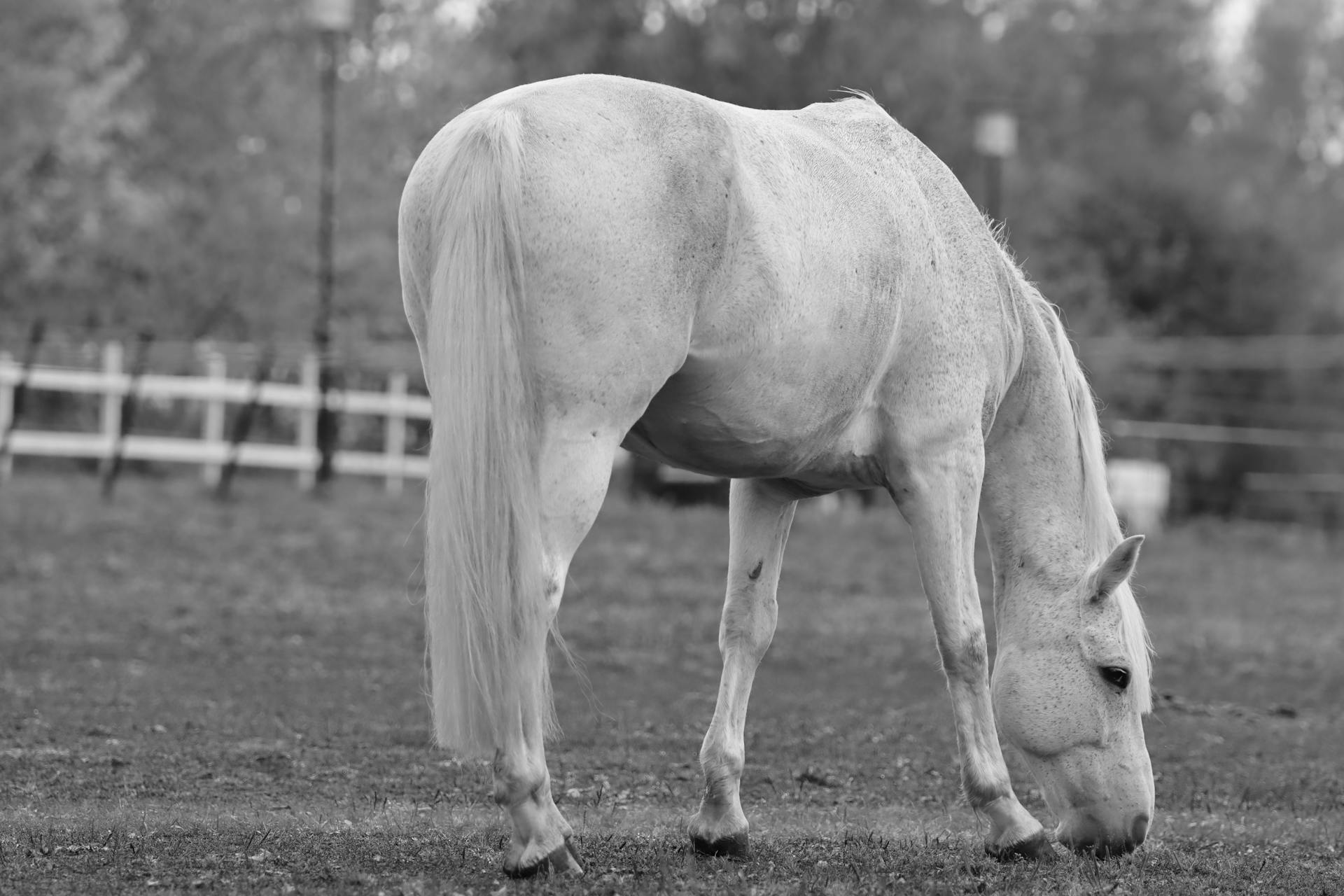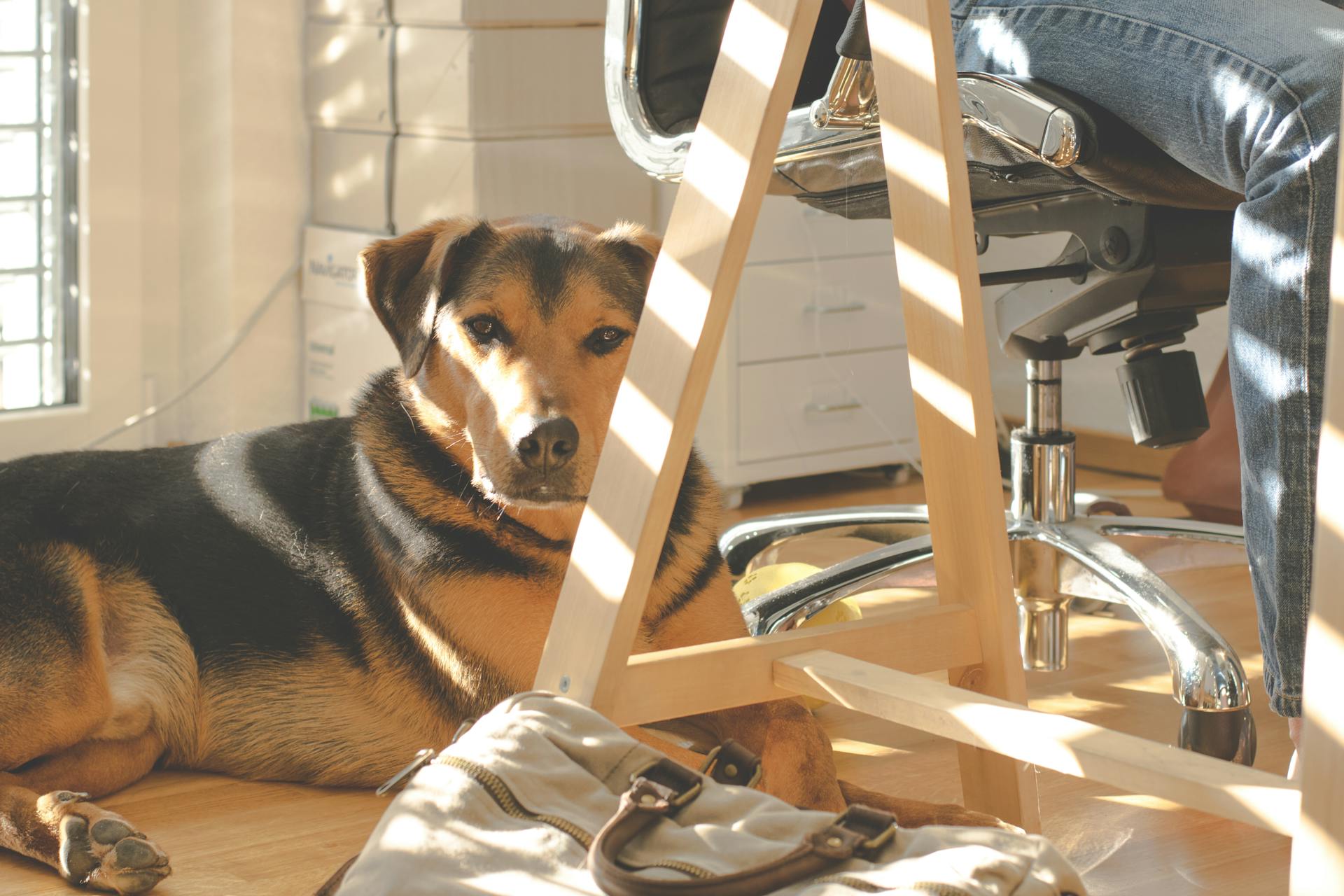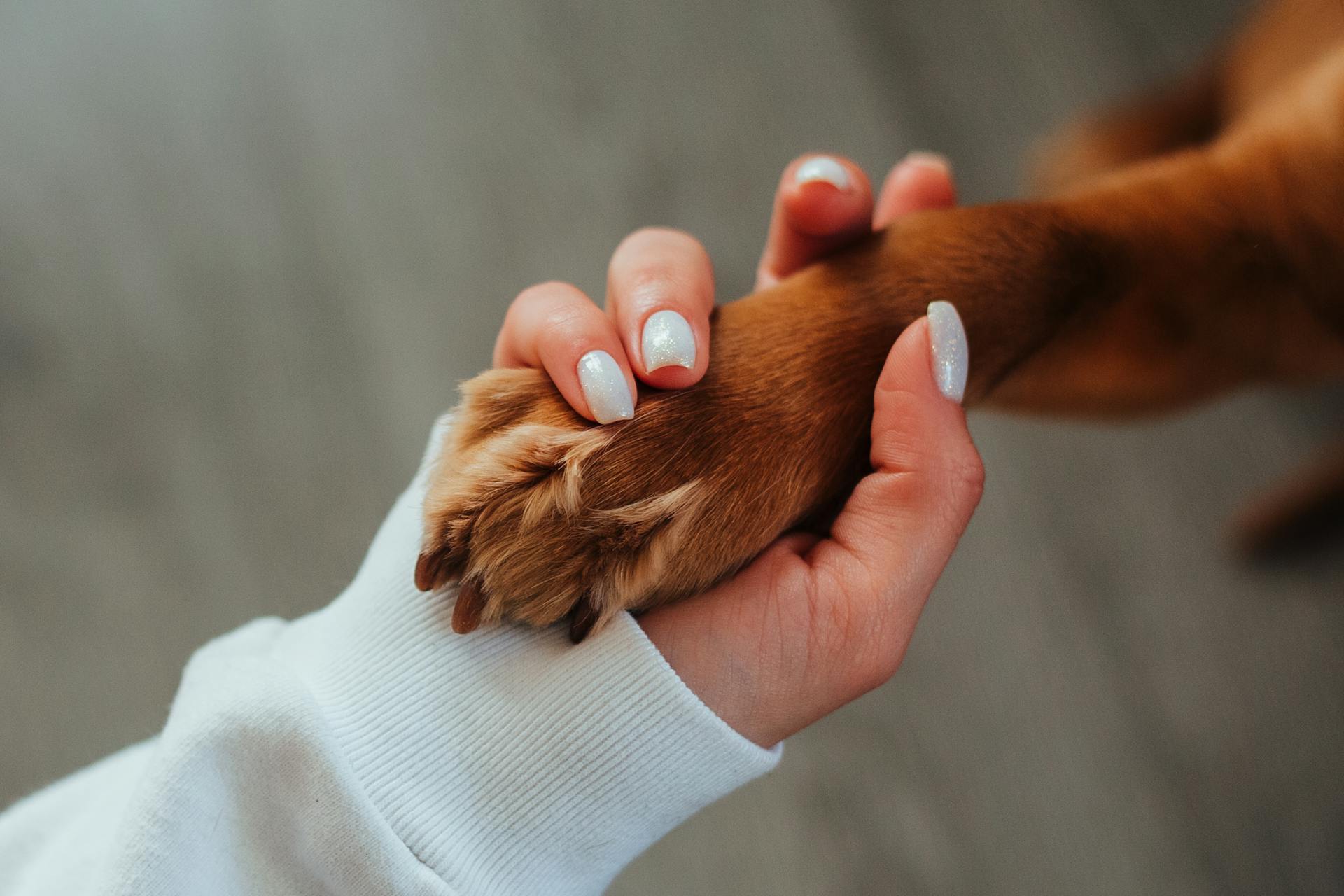
The Swedish Vallhund is a relatively small breed, but they can be prone to some health issues. Hip dysplasia is a common problem, with many Vallhunds developing arthritis in their hips.
Regular exercise and a healthy diet can help prevent or manage hip dysplasia. A good rule of thumb is to provide at least 30 minutes of physical activity per day.
Swedish Vallhunds are also prone to eye problems, including cataracts and progressive retinal atrophy. These conditions can lead to blindness if left untreated.
Regular eye exams are essential to catch any issues early on. Your veterinarian can recommend a schedule for eye check-ups based on your Vallhund's age and health status.
Readers also liked: Are Goldendoodles Prone to Cancer
Health Issues
The Swedish Vallhund is generally a healthy breed, but like any dog, it's not immune to certain health issues. Swedish Vallhunds can suffer from hip dysplasia, which causes the hip joint to grow and develop abnormally.
Hip dysplasia can lead to lameness, muscle loss in the rear limbs, hip pain, and exercise intolerance. This is a common problem in Nordic breeds.
Elbow dysplasia is also a concern, although it's less common in Swedish Vallhunds. Patellar luxation, retinopathy, and cataracts are other health issues that may affect this breed.
Swedish Vallhund retinopathy is a unique problem that causes damage to the dog's retina and can eventually lead to blindness. This condition is caused by a hereditary mutation found in the breed.
There's a DNA test available for this mutation, and reputable breeders won't breed dogs that have it. This helps prevent the spread of the condition.
Here are some common health problems that Swedish Vallhunds may experience:
- Hip dysplasia
- Swedish Vallhund retinopathy
- Cataracts
Grooming and Care
Grooming is an essential part of Swedish Vallhund care, and it's not just about making them look cute. Regular brushing is a must, with daily brushing recommended during periods of higher shedding, which typically occur twice a year in the spring and fall.
Expect to brush their thick coat at least twice a week, or more if you want to minimize excess fur. A daily brushing will help keep the fur under control during these shedding periods.
You'll also need to check their nails monthly to see if they need a trim, and bathe them roughly every month to keep them clean. Don't forget to inspect their ears weekly for any abnormalities, and brush their teeth daily to keep their smile shining.
Here's a quick rundown of their grooming needs:
- Brush their coat at least twice a week, or daily during shedding periods
- Bathe them roughly every month
- Check their nails monthly and trim if necessary
- Inspect their ears weekly for any abnormalities
- Brush their teeth daily
Grooming a Vallhund
Grooming a Vallhund requires regular attention to their coat, nails, and ears. Brush their coat once a week to remove loose fur and prevent tangles and mats.
You'll want to brush more frequently during periods of high shedding, which typically occur in the spring and fall. Daily brushing can help keep loose fur under control during these times.
Bathe your Vallhund roughly every month to keep them clean. Regular nail checks are also essential, especially considering their exercise needs.
Their ears should be examined weekly for any abnormalities. Cleaning the ears every one to two weeks can help prevent ear infections.
Here's a summary of Vallhund grooming needs:
Daily brushing of their teeth is also crucial to prevent dental issues.
Eye Care
Swedish Vallhunds don't require special eye care grooming, but it's essential to keep an eye out for any issues.
If debris collects in the corner of your dog's eyes, you can gently wipe it off with a damp cloth to keep them clean.
Visit the vet if you notice any changes in your dog's eyes, such as squinting, discharge, or redness.
A fresh viewpoint: Pug Dog Eyes Pop Out
Characteristics, Feeding, Cost, and Care
The Swedish Vallhund is a delightful companion, with a wolf-like appearance and lively temperament. This medium-sized herding dog breed originated in Sweden over 1,000 years ago.
The Swedish Vallhund is a high-energy dog, requiring daily 1-2 hours of physical activity to keep it happy and well-behaved. This can include walks, jogs, hikes, and fetching tennis balls.
To give your Swedish Vallhund a mental workout, try dog sports like agility or herding. Regular exercise will not only keep your dog happy but also well-behaved.
Swedish Vallhunds love to eat, and as a full-grown vallhund, they should stick to good-quality food meant for active small dogs. A cup to a cup and a half of food portioned out twice a day should suffice.
The cost of owning a Swedish Vallhund can vary, but you can expect to pay a reasonable price for this wonderful breed.
Here's a quick guide to daily care for your Swedish Vallhund:
- Bath your dog at least once a month.
- Check its nails monthly and trim them as needed.
- Look in its ears weekly and brush its teeth daily.
Diet and Nutrition
Swedish Vallhunds are prone to obesity, so it's essential to monitor their food intake and ensure they're not overeating. A good rule of thumb is to feed them 1 to 1.5 cups of food daily, divided into two measured meals.
Always provide fresh water for your dog. You can also add omega-3 fatty acids to their diet if recommended by your veterinarian, which can help support their skin, coat, kidneys, joints, and heart.
A well-balanced diet is crucial for your Swedish Vallhund's overall health. Look for commercial kibble or wet food that meets the standards set by the Association of American Feed Control Officials (AAFCO).
Swedish Vallhund puppies need to eat specially formulated food and should be fed at least three meals a day on a consistent schedule to prevent low blood sugar levels (hypoglycemia).
Here are some general guidelines for feeding your Swedish Vallhund:
Remember to discuss the type of food and amount with your vet, and regularly monitor your dog's weight to prevent obesity.
How Long Do They Live?
Swedish Vallhunds can live up to 12-14 years on average.
Their lifespan is influenced by their genetic makeup, with some lines being bred for longer life expectancy than others.
A Swedish Vallhund's diet and exercise routine play a significant role in determining their overall health and longevity.
Regular exercise and a balanced diet can help prevent obesity and related health issues.
Proper care and attention from their owners can also contribute to a Swedish Vallhund's long and healthy life.
Broaden your view: How Much Exercise Does a Cavapoo Need
Testing Tips
Genetic testing is a crucial step in determining whether a Swedish Vallhund is a carrier of Progressive Retinal Atrophy (PRA). This can be done through a reliable test that identifies the MERTK gene mutation.
Progressive Retinal Atrophy is inherited in an Autosomal Recessive manner, meaning a dog must receive two copies of the mutated gene to develop the disease. This typically occurs when both parents are carriers.
Carrier dogs do not typically exhibit symptoms of the disease, but breeding two carriers together increases the risk of having affected pups. Each pup born to this pairing has a 25% chance of inheriting the disease and a 50% chance of being a carrier.
Additional reading: Progressive Retinal Atrophy in Labradors
Genetic testing should be performed before breeding to determine the risk of producing affected pups. Breeding known carriers together is not recommended to eliminate this mutation from breeding lines.
Dogs that are not carriers of the mutation have no increased risk of having affected pups. However, a normal result in MERTK does not exclude other types of PRA caused by mutations in different genes.
Featured Images: pexels.com


